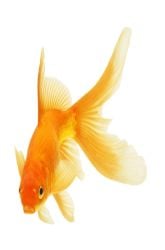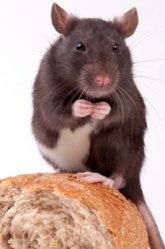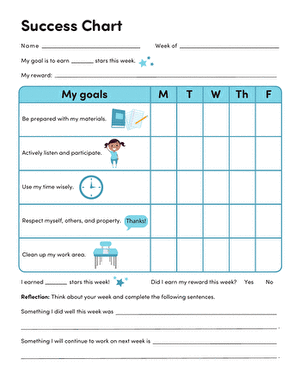Science project
Goldfish Behavior
Grade Level: 4th - 7th; Type: Life Science
Objective:
To determine if a goldfish can be trained to associate the sound of a bell with feeding time.
The purpose of this experiment is to see whether a goldfish has the intelligence necessary to respond to simple behavioral conditioning.
Research Questions:
- How does behavioral conditioning work?
- How did Pavlov discover that dogs could be conditioned?
- Are goldfish intelligent?
- Can humans be conditioned?
Through his research, Ivan Pavlov discovered that animals can be conditioned, or trained, to associate unrelated stimuli. In his famous experiment, he trained dogs to salivate at the ringing of a bell. By always ringing a bell before feeding the dogs, Pavlov taught the dogs that they were going to be fed when they heard the bell ring. After time, the sound of the bell became so closely linked with the idea of food that the dogs would salivate at the sound of the bell even when they were not fed. In this experiment, goldfish will be tested to see if they will respond in the same way. While a goldfish does not salivate, they do exhibit “excited” behavior during feeding time. This experiment will determine whether a goldfish can be conditioned to demonstrate this feeding behavior in the absence of food.
Materials:
- 2 goldfish
- 2 goldfish bowls
- Fish food
- A bell
Experimental Procedure:
- Set up the two goldfish bowls in separate rooms so that only one will be able to hear the sound of the bell.
- Label one of the fish tanks “E” for experimental and the other one “C” for control.
- Feed the goldfish daily as per the instructions on the fish food.
- Before feeding goldfish E, ring a bell for 30 seconds. Do this each time.
- Record behaviors on a chart such as the one below.
- During the last week of the experiment, ring the bell in front of each fish tank for 30 seconds each day without feeding the fish.
- Record these behaviors on a chart.
- Compare the behavior of the two different fish to determine whether there is a difference between the experimental and control goldfish.
|
|
Was fish fed?
|
Describe behaviors observed
|
|
Day 1 E
|
Yes
|
Swam slowly in the middle of the bowl then quickly at the top when it noticed the food. |
|
Day 1 C
|
Yes
|
Swam slowly near the bottom of the tank then slowly in the middle of the tank while feeding. |
|
Day 2 E
|
Yes
|
Swam near the bottom of the tank then moved to the top to feed from the surface. |
|
Day 2 C
|
Yes
|
Swam near the top of the tank then quickly at the surface while feeding. |
Terms/Concepts: Behaviorism; Behavioral conditioning; Stimulus; Ivan Pavlov; Conditional reflexes
References:
Education.com provides the Science Fair Project Ideas for informational purposes only. Education.com does not make any guarantee or representation regarding the Science Fair Project Ideas and is not responsible or liable for any loss or damage, directly or indirectly, caused by your use of such information. By accessing the Science Fair Project Ideas, you waive and renounce any claims against Education.com that arise thereof. In addition, your access to Education.com's website and Science Fair Project Ideas is covered by Education.com's Privacy Policy and site Terms of Use, which include limitations on Education.com's liability.
Warning is hereby given that not all Project Ideas are appropriate for all individuals or in all circumstances. Implementation of any Science Project Idea should be undertaken only in appropriate settings and with appropriate parental or other supervision. Reading and following the safety precautions of all materials used in a project is the sole responsibility of each individual. For further information, consult your state's handbook of Science Safety.













